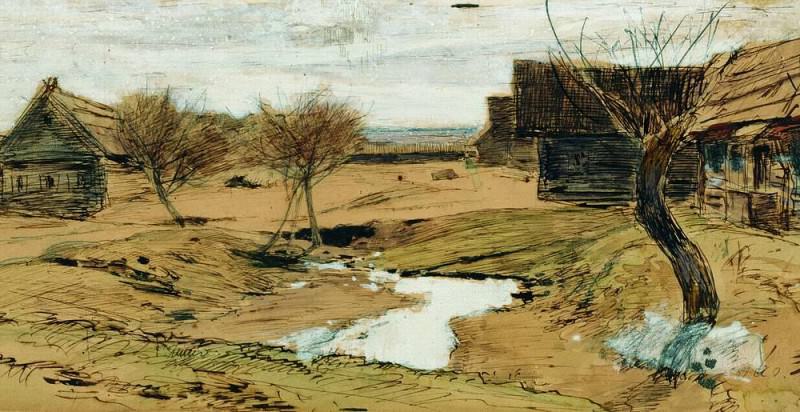Spring has come Isaac Ilyich Levitan (1860-1900)
Isaac Ilyich Levitan – Spring has come
Edit attribution
Download full size: 1000×515 px (0,1 Mb)
Painter: Isaac Ilyich Levitan
The great painter Isaac Levitan was very fond of nature, so most of his works are landscapes. The painting entitled "Spring has Come" was painted in 1896. It was part of a series of his most lyrical works. It captures the transition of nature to the season of spring awakening after the long winter colds. Isaac Levitan, working on his last works, began to depict more and more quiet and peaceful landscapes of the countryside.
Description of Isaac Levitan’s painting "Spring Has Come".
The great painter Isaac Levitan was very fond of nature, so most of his works are landscapes.
The painting entitled "Spring has Come" was painted in 1896. It was part of a series of his most lyrical works. It captures the transition of nature to the season of spring awakening after the long winter colds.
Isaac Levitan, working on his last works, began to depict more and more quiet and peaceful landscapes of the countryside. The canvas "Spring has come" was no exception.
In 1896 the artist visited his friends and stayed for long periods in the villages near Moscow. Perhaps one of them became the prototype of this painting, although the artist did not like to write from nature.
The plot of the canvas is fairly simple. It depicts a bright and warm day of early spring. A large part of the painting is taken up by the earth. It still retains traces of snow, although in the sun-drenched areas it has already completely melted. Spring has not yet covered the ground with a green carpet of grass, but here and there the first little sprouts are already breaking through. But trees are in no hurry to transform themselves and come to life after their winter sleep. Their trunks and spreading branches are dry and motionless.
Behind the fence, in the background, you can see the endless expanses of Russian fields and forests. They are covered in a turquoise haze and extend into the distance beyond the horizon line. At the right and left corners of the painting, we can see wooden village huts. Their roofs are covered with thatch, to keep them warm.
The sky over the countryside is bright but cold in winter. The sun has not yet painted it blue. Now the skyline looks pale and high.
Levitan was able to masterfully depict, with the help of pencil strokes, the movement of the gusty and fresh wind, gliding between the branches and the huts. The uniqueness and verisimilitude of this painting is also due to the fact that the author used different accessories for painting, among them gouache, filler, whitewash, pen and pencil.
Кому понравилось
Пожалуйста, подождите
На эту операцию может потребоваться несколько секунд.
Информация появится в новом окне,
если открытие новых окон не запрещено в настройках вашего браузера.
You need to login
Для работы с коллекциями – пожалуйста, войдите в аккаунт (open in new window).




















COMMENTS: 6 Ответы
иу как круто
великолепно
год какой этой картины
спасибо я благодаря вам сделал ДОМАШКУ
Очкнь круто токо год не могу найти)
Тушь и белила на картоне – и бескомпромиссное попадание в цвета деревенской весенней распутитцы!
You cannot comment Why?
In the foreground, a meandering stream or puddle of melted snow occupies the center, reflecting the overcast sky and signifying the end of winter. The ground around it is uneven and marked with lines of sparse grass, suggesting thawing earth. Two bare trees stand prominently, their delicate branches reaching upwards, a symbol of new life about to emerge. In the middle ground, there are several rustic wooden houses with dark, weathered siding and thatched roofs, indicative of a simple, rural dwelling. A fence borders the far distance, beyond which a hazy horizon suggests a vast, open space.
The title Spring has come is key to understanding the subtext. Despite the seemingly bleak and barren landscape, the painting conveys a sense of hope and awakening. The melting snow and the budding trees are powerful symbols of renewal and the promise of warmer days. The starkness of the setting may also suggest the resilience of life in the face of harsh conditions, and the quiet beauty found in the everyday, even in the aftermath of winter. The overall impression is one of subtle beauty, focusing on the quiet emergence of life and the promise of the coming season.